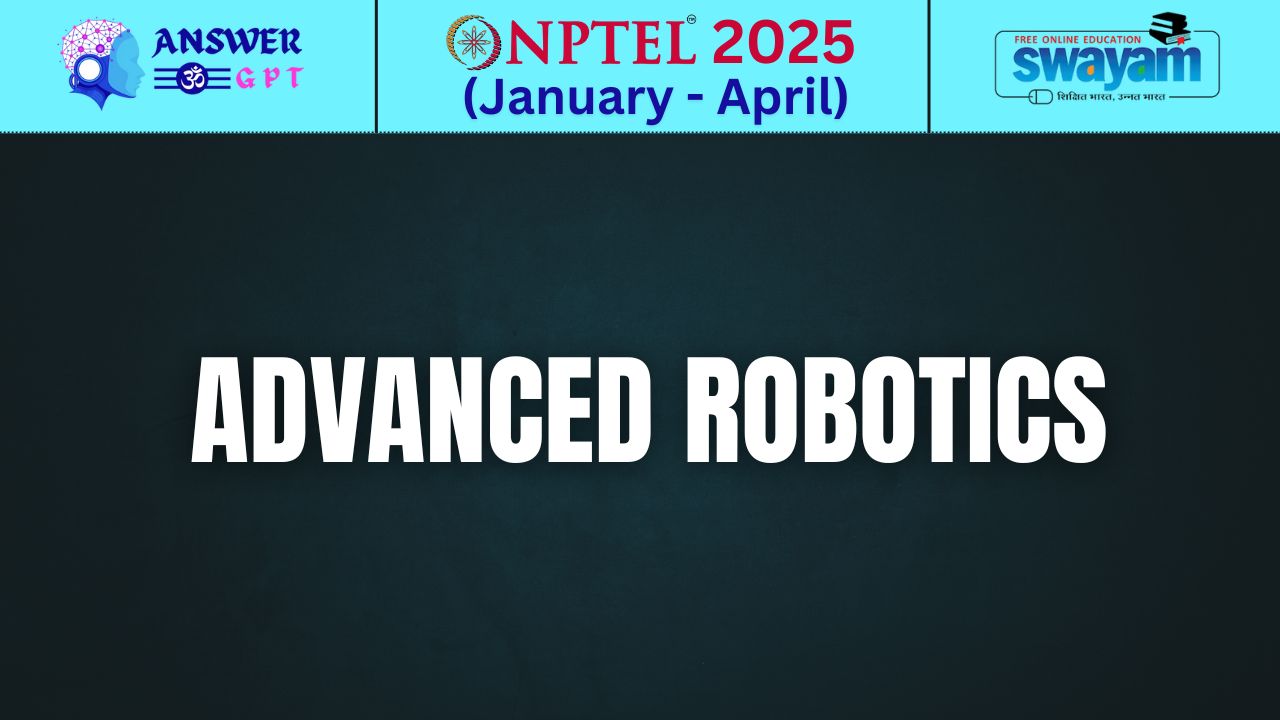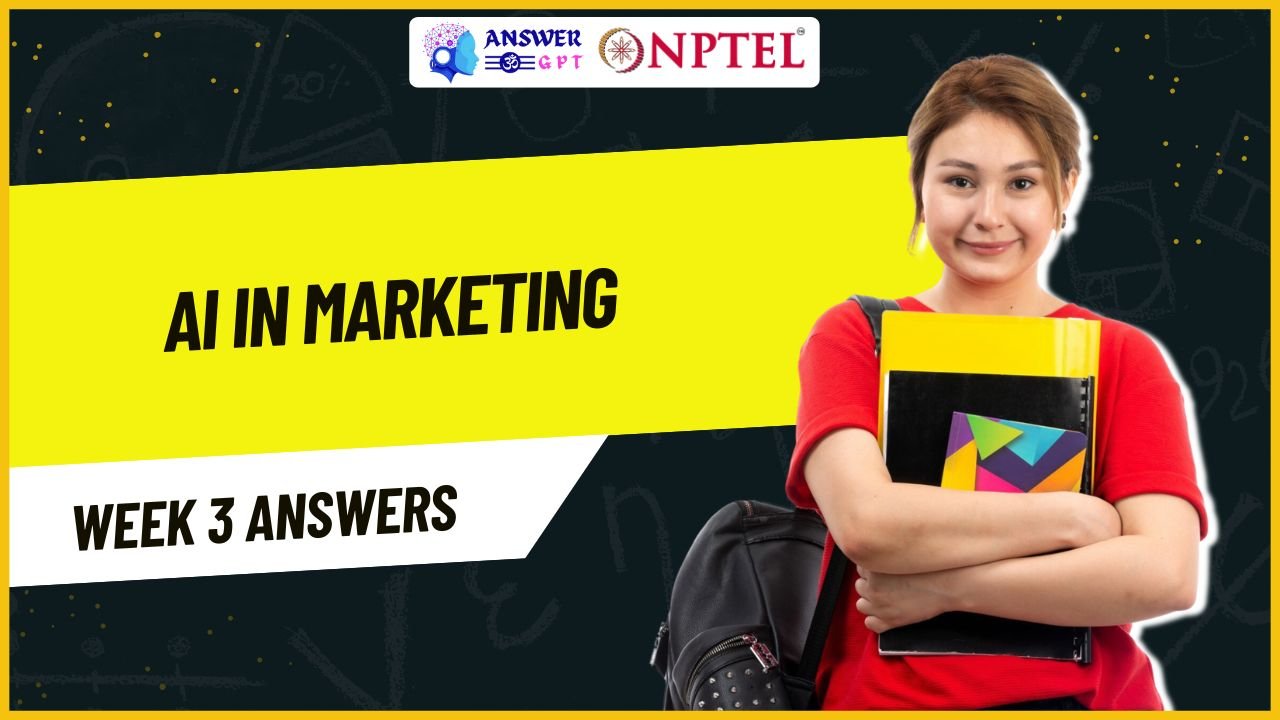Introduction To Industry 4.0 And Industrial Internet Of Things Week 3 NPTEL Assignment Answers 2025
NPTEL Introduction To Industry 4.0 And Industrial Internet Of Things Week 3 Assignment Answers 2024
1. Which of the following is not a feature of Cyber-Physical Systems?
Options:
a. Reactive Computation
b. Concurrency
c. Real-Time Computation
d. Standalone non-networked Computation
Answer :- d ✅
Explanation: CPS are networked and interconnected systems; standalone non-networked computation contradicts this feature.
2. In the context of CPS in Smart Grid, what is the full form of DAU?
Options:
a. Data Aggregation Unit
b. Data Analytic Unit
c. Distributed Augmented Universe
d. Dedicated Accounting Unit
Answer :- a ✅
Explanation: In Smart Grids, DAU stands for Data Aggregation Unit, which collects and processes data from sensors/meters.
3. Which of the following is not a component of CPS’s “5C Architecture” for Industry 4.0?
Options:
a. Connection
b. Conversion
c. Compatibility
d. Cognition
Answer :- c
Explanation: The 5C architecture consists of Connection, Conversion, Cyber, Cognition, and Configuration. Compatibility is not part of it.
4. What are the key parts enabling collaboration productivity in Industry 4.0?
Options:
a. IT Proliferation, Single Source of Truth, Industrialization, Coordination
b. Financial Analysis, Market Research, Legal Compliance, Public Relations
c. Human Resources, Sales Targets, Customer Feedback, Advertising
d. Supply Chain Management, Quality Control, Cost Reduction, Branding
Answer :- a
Explanation: These elements are foundational in achieving collaborative productivity in Industry 4.0 systems.
5. What does ‘PLM’ stand for in the context of Industry 4.0?
Options:
a. Product Lifecycle Management
b. Public Liability Marketing
c. Professional Learning Modules
d. Personal Leadership Mastery
Answer :- a
Explanation: PLM = Product Lifecycle Management, which manages the entire lifecycle of a product from design to disposal.
6. What does the Technique ‘ABC’ in PLM stand for?
Options:
a. Activity Based Costing
b. Advanced Business Computing
c. Analytical Business Concepts
d. Automated Banking Coordination
Answer :- a
Explanation: Activity-Based Costing is a costing method that identifies activities and assigns costs based on consumption.
7. In which fields are AR and VR used in Industry 4.0?
Options:
a. Cooking and nutrition
b. Fashion design only
c. Machining, production, and education
d. Network Security
Answer :- c
Explanation: AR/VR is actively used in training, production monitoring, and education in Industry 4.0.
8. Which among the following is one type of categorization of AR?
Options:
a. Marker-attached AR
b. Markerless AR
c. Null AR
d. Marker-like AR
Answer :- b
Explanation: Markerless AR uses GPS, accelerometer, and compass instead of image recognition.
9. Who first coined the term “Augmented Reality”?
Options:
a. Thamos Caudell
b. Steve Jobs
c. Elon Musk
d. Mark Zuckerberg
Answer :- a
Explanation: Thomas Caudell coined the term while working at Boeing in the early 1990s.
10. What type of AR uses visual markers for outcomes?
Options:
a. Marker-based Augmented Reality
b. Markerless Augmented Reality
c. Projection Based Augmented Reality
d. Superimposition Based Augmented Reality
Answer :- a
Explanation: Marker-based AR detects specific patterns or images (markers) to trigger the AR overlay.
11. What type of knowledge is used in AI techniques?
Options:
a. Only historical data
b. Only factual information
c. Procedural, declarative, and heuristic knowledge
d. Limited to scientific formulas
Answer :-c
Explanation: AI uses procedural (how), declarative (what), and heuristic (rules-of-thumb) knowledge.
12. What is the use of AI in IIoT?
Options:
a. No use in IIoT
b. Only for data storage
c. Machine safety, efficient product lifecycle, efficient manufacturing processes, and others
d. Limited to basic calculations
Answer :- c
Explanation: AI enhances automation, predictive maintenance, and optimization in Industrial IoT environments.
13. Which of the following characterizes Big Data?
Options:
a. Limited to textual data only
b. Consists of structured and non-structured data
c. Only includes numerical data
d. Data that is always organized
Answer :- b
Explanation: Big Data includes structured, semi-structured, and unstructured data like images, text, logs, etc.
14. What does a distributed file system in Big Data ensure?
Options:
a. Inconsistency of data
b. Unreliable data storage
c. Consistency, accessibility, and fault tolerance of data
d. Limited data access
Answer :- c
Explanation: Distributed file systems like HDFS ensure data reliability and availability across clusters.
15. Suppose you write a program which uses an API to collect data continuously from LinkedIn and Facebook. You then wish to analyze such data. What type of big data source are you using?
Options:
a. Internal data source
b. External data source
c. Complimentary data source
d. All of the above
Answer :- b
Explanation: Data collected from external APIs (like Facebook/LinkedIn) are considered external data sources.

![[Week 1-12] NPTEL Introduction To Industry 4.0 And Industrial Internet Of Things Assignment Answers 2025](https://answergpt.in/wp-content/uploads/2025/01/Introduction-To-Industry-4.0-And-Industrial-Internet-Of-Things-2025.jpg)

![[Week 1-12] NPTEL Introduction To Industry 4.0 And Industrial Internet Of Things Assignment Answers 2024](https://answergpt.in/wp-content/uploads/2024/01/Introduction-To-Industry-4.0-And-Industrial-Internet-Of-Things-scaled.jpg)


